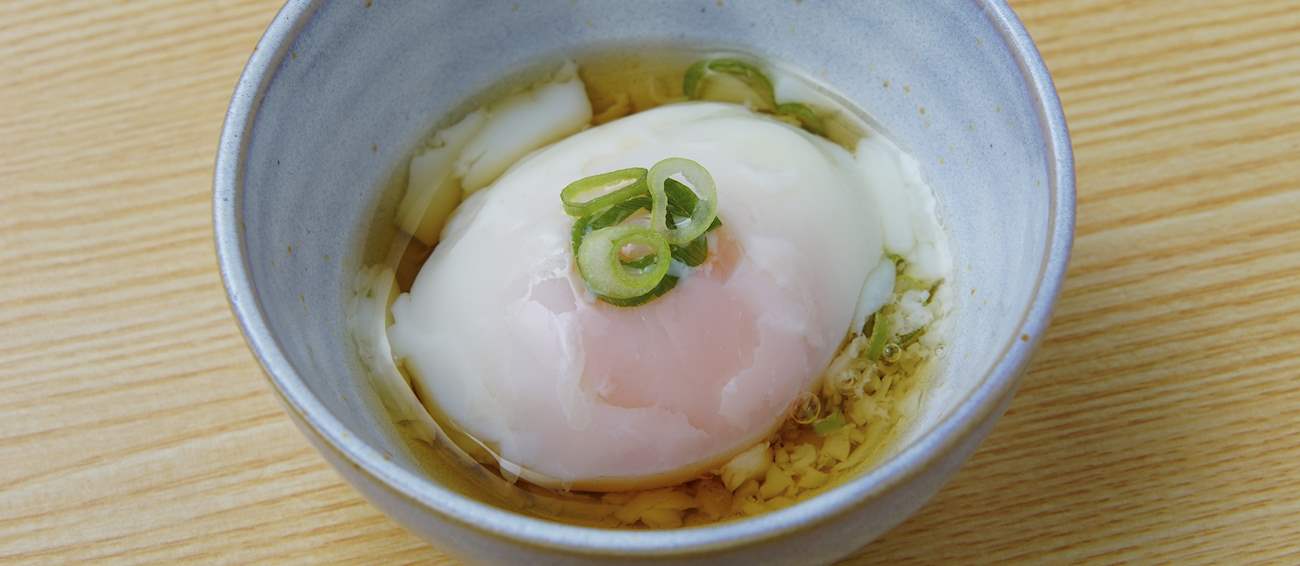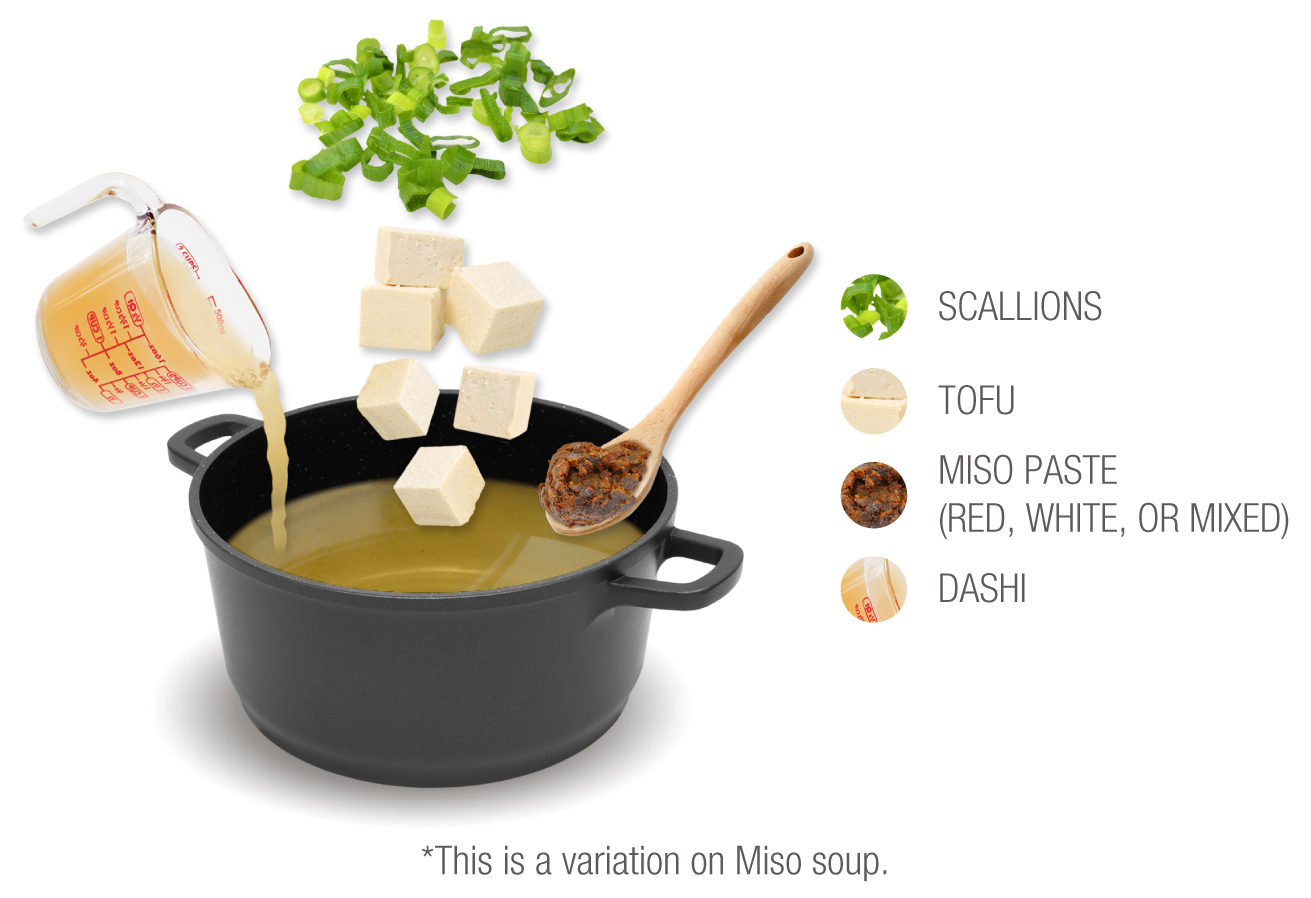Miso soup is a traditional soy-based soup made from a stock called dashi, miso paste, and various additional ingredients such as seaweed or tofu. It is estimated that more than 70% of Japeanese people consume the soup for breakfast, although it is commonly available at any time of the day.
In Japanese restaurants in the United States, miso soup is often offered as an appetizer. The soup is thought to have medicinal properties, as it alkalizes the blood and revives the nervous system. The main ingredient is called miso - a combination of rice, salt, water, and fermented soybeans, shaped into a paste that is similar to peanut butter in texture.
MOST ICONIC Miso Soup
View moreOnsen tamago is a traditional delicacy made by slow-cooking eggs in baskets that are submerged in onsen hot springs. The eggs are cooked in their shells so that the yolk becomes soft-set and the egg white develops a loose consistency. It is believed that the secret is in the hot springs' temperature, which causes the egg to be creamy and flavorful on the interior.
Traditionally, onsen tamago is consumed by placing the egg in an indentation in steamed rice and drizzling some soy sauce or broth around it, preferably with some grated daikon on the side. It is recommended to garnish the dish with finely chopped spring onions on top.
Tamagoyaki is a Japanese omelet dish made by using a unique cooking method - the eggs are folded into themselves until they are fully cooked. Although the omelette has no fillings, it is usually seasoned with sugar, mirin, and soy sauce. Tamagoyaki can often be found in bento boxes, and it is traditionally served either for breakfast or as a sushi topping.
The name of the dish can be literally translated to eggs cooked over dry heat. The simple tamagoyaki first became popular in the 1950s, when the government started to encourage parents to give more protein to their children, and the farmers started to keep more chickens.
VARIATIONS OF Tamagoyaki
The Japanese term himono encompasses various types of dried fish products. It is usually prepared with smaller fish varieties such as mackerel or sardines, which are typically butterflied, cleaned, occasionally marinated, and then sun-dried or refrigerated.
The technique grew out as a preservation method that enabled longer shelf life. In the past, salt was mainly used as a preservative, but modern day varieties mostly use it as a seasoning. When dried, the fish can be stored or eaten immediately, when it is usually grilled and brushed with a flavorful soy-based sauce.
As the name states, yakisoba pan is an unusual Japanese combination of stir-fried yakisoba noodles and plain bread rolls. The noodles are first blended with various vegetables and doused in a thick sauce, and the combination is then stuffed inside the roll.
The concoction is finished with mayonnaise, pickled ginger, and strips of dry seaweed. Yakisoba pan is available in many grocery stores and supermarkets throughout Japan and is usually enjoyed as a nutritious snack or a quick breakfast.
Zōni is a versatile Japanese dish which consists of mochi rice cakes served in a flavorful broth, complemented with various toppings. In the Kanto region, zōni is usually prepared with the clear dashi stock seasoned with fish flakes, while the Kansai-style usually employs an opaque broth seasoned with white miso.
The choice of toppings and the shape of the chewy mochi cakes are also regionally specific and might include chicken, fish cakes, daikon, and (in some coastal regions) even various seafood ingredients. It is believed that zōni initially appeared as a nutritious dish in the traditional samurai cuisine and was later incorporated in the Japanese New Year’s tradition.
TasteAtlas food rankings are based on the ratings of the TasteAtlas audience, with a series of mechanisms that recognize real users and that ignore bot, nationalist or local patriotic ratings, and give additional value to the ratings of users that the system recognizes as knowledgeable. TasteAtlas Rankings should not be seen as the final global conclusion about food. Their purpose is to promote excellent local foods, instill pride in traditional dishes, and arouse curiosity about dishes you haven’t tried.







